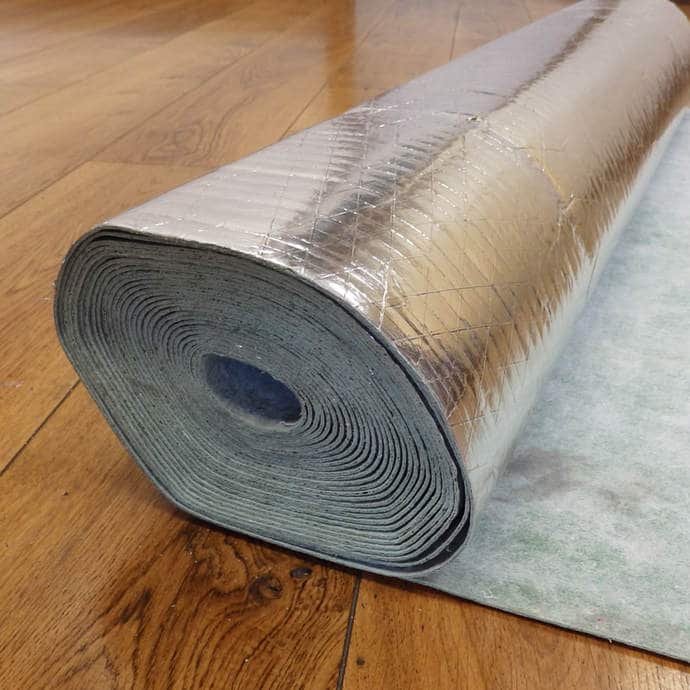Hardwood floors are some of the most sought after flooring types among new home buyers and sellers alike. They’re strong, durable, easy to maintain and provide a classic look and feel that’s hard to replicate with other types of flooring. But did you know that you should also consider the type of material that’s under the hardwood? The hardwood underlay can help trap dust, moisture and sound while providing a more comfortable underfoot feel. So, what should you put under hardwood flooring? In this article, we’ll find out.
Red Rosin Paper
Red rosin paper is one of the cheaper underlays used by flooring installers. Basically, it works well to keep dust from rising from the subfloor while making the installation somewhat easier. The planks slide into place with much less friction. But using red rosin paper won’t do anything to prevent moisture from the subfloor from reaching the hardwood or keep the planks in place as they expand and contract with temperature changes.
Builder’s Felt
Asphalt saturated builder’s felt is moisture resistant, reduces plank movement as it expands and contracts and can help prevent squeaking when the floor is walked upon. What builder’s felt won’t do is significantly reduce the amount of noise caused by footsteps, especially when occurring on overhead floors.
Rubber Membrane
Rubber membranes are a popular underlay for several different types of flooring materials, including hardwood. Being composed of rubber, it provides a waterproof barrier between the subfloor and the flooring. Rubber also cuts down on sound transmission somewhat, but works best when combined with a plywood underlay.
Thermal Foil
Thermal foil is usually a combination of shiny foil laminated to felt or other soft material. This makes it moisture proof and heat reflecting while also reducing the amount of sound that travels when the floor is being tread upon. Depending on its thickness, it can also provide some cushioning to the planks.
Foam
Sheets of flexible polyurethane foam can also be used to prevent heat escaping into the subfloor and to reduce the noise associated with walking on the hardwood. However, foam isn’t as good at preventing moisture from affecting the hardwood and often needs to be combined with a damp proof membrane

